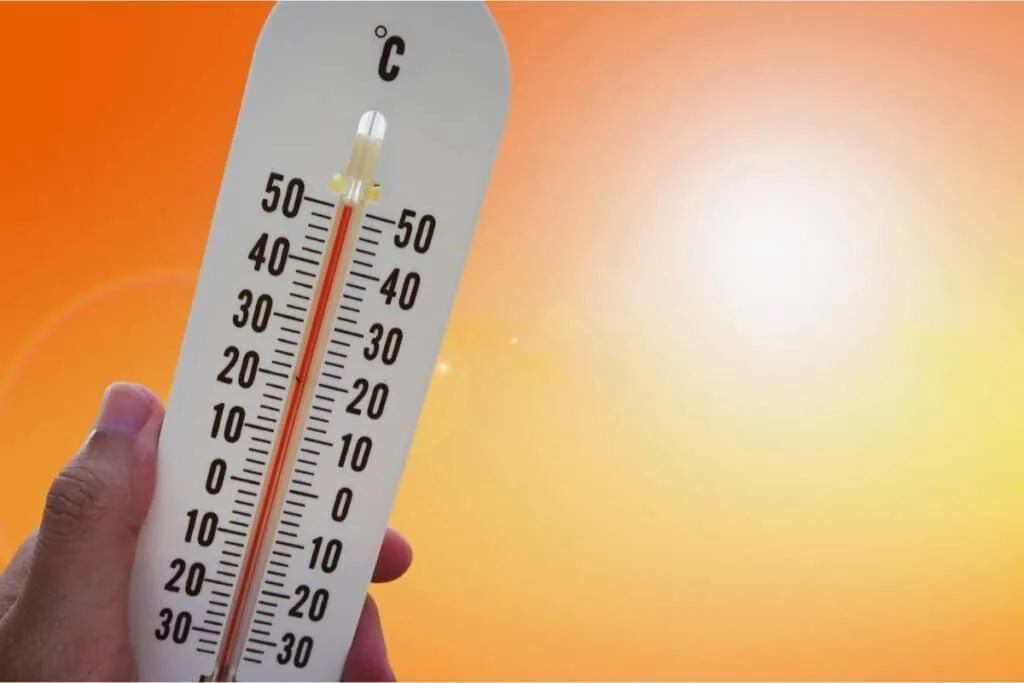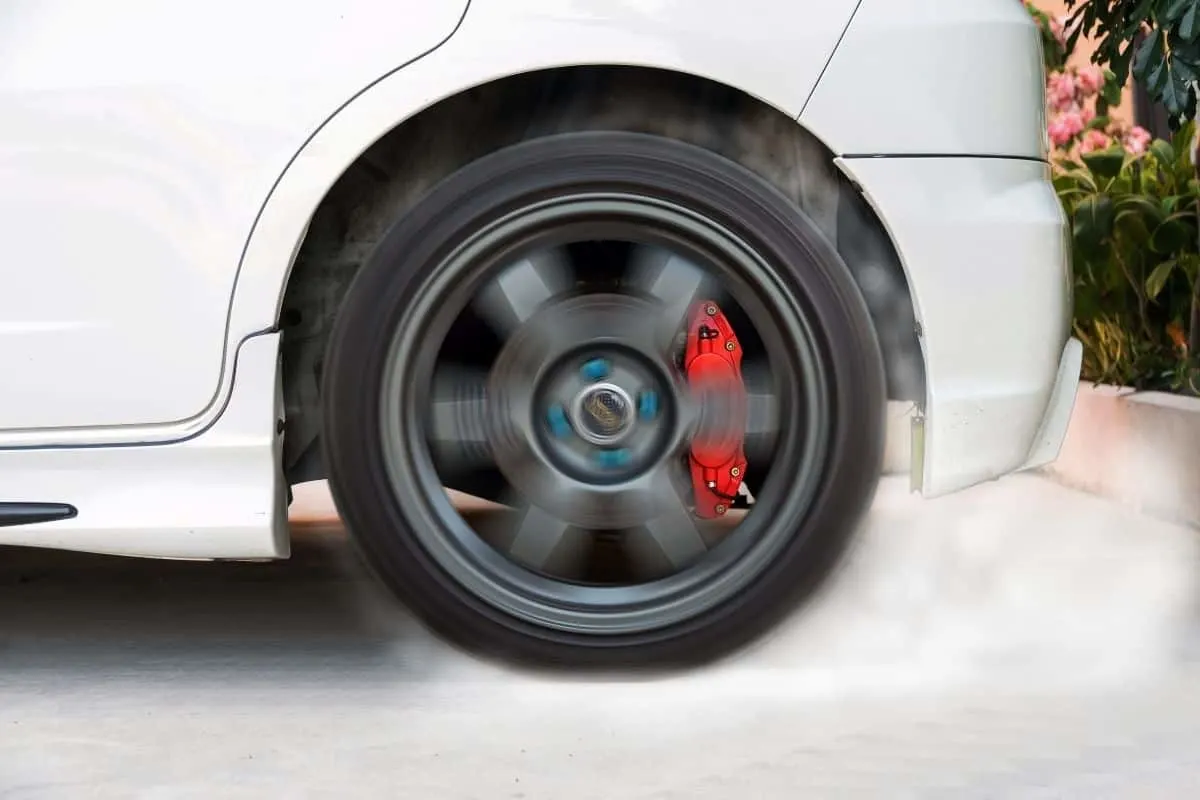The effects of heat on your tires are something that many people do not think about, but heat can damage them and cause them to explode or fail.
Car tires can melt as they are primarily made of vulcanized rubber which has a melting point of 1,112 Fahrenheit (600 Celsius). However, the likelihood of reaching these temperatures in typical use is highly unlikely.
Many people do not even know this is a possibility, and you might be wondering if you should be concerned. Also, is there anything you can do about it?
Can Car Tires Melt in Hot Weather?
Tires overheating is an issue that is usually associated with racing tires. Overheating can cause graining and blistering, both of which can weaken the tire and cause it to fail suddenly!
Pressure and friction cause heat to build up in the tread, and it is especially a problem for tires with thicker treads. Hot weather and hot asphalt compound the problem.
When heat builds up in the rubber, it creates chemical changes that cause the tire to deform. Heat also causes the air inside of the tire to expand. The deformation causes the tire to weaken, and the additional air pressure can cause it to explode.
Graining is caused by friction on the outside of the tire. Grainy tires have a rough surface and will often collect dirt more easily. It happens when tires become soft from extreme heat.
Blistering is caused by friction of the tire’s inner rubber layers. They rub against each other and build up heat from friction. This causes the rubber to devulcanize, which means that it returns to a softer more natural state.
This causes blisters on the surface of the tire and can result in chunks of tire tearing off.

What Temperature Do Car Tires Melt?
New rubber melts at 1,112 degrees Fahrenheit, or 600 degrees Celsius. At this temperature, the rubber melts almost immediately. This is the temperature used to clean gases and other impurities from the rubber during manufacture.
However, most tire experts consider 195 degrees Fahrenheit to be the maximum temperature for preserving the life of your tires. After that, the rubber in your tires will begin breaking down, and you can see graining or blistering begin to occur.
Keep in mind that there is a difference in the rubber conditioning between summer and winter tires. Some winter tires can begin to melt slightly at 180 degrees Fahrenheit at which point you will begin to see graininess and damage.
Tires are not entirely made of rubber, and various manufacturers use different formulas. Tires can also contain latex, carbon, sulfur, chalk, rosin, and other compounds. This affects their melting point and their ability to withstand heat.
When most people talk about tires melting, what they actually mean is when the tire becomes soft. At 250 degrees Fahrenheit, the tire begins to lose its structural integrity and become severely compromised. Rubber can ignite and catch on fire at 500 to 600 degrees Fahrenheit or 260 to 316 degrees Celsius.
Today’s tires are made using a process called vulcanization. This process changes the molecules of the rubber so that they form a long-chain molecule. This makes them unlikely to melt under most circumstances you might encounter during daily use.
Can Tires Melt on the Road?
Your tires would have to get to a very high temperature to actually melt on the road, but they can become soft. The bigger problem is that permanent damage occurs to your tires at relatively low temperatures, and this can cause a blowout or worse.
When people talk about tires melting, they think of dripping rubber running everywhere onto the pavement, but that is not the case.
The vulcanization process changes the chemical properties of the rubber and other compounds so that this is not likely to happen. When people talk about tires melting, they are actually talking about them becoming very soft and pliable.
When the tire becomes deformed and weakened, you are more likely to experience a blowout. For every 10-degree rise in Fahrenheit, the tire pressure will increase by 1 pound per square inch (PSI).
As the rubber begins to deform, even a small rise in PSI can cause them to fail.
What Causes Tires to Overheat?
It is a common misconception that operating your tires on a hot road can cause them to overheat.
This can be a contributor and make the problem worse in southern portions of the United States during the summer, but it is usually not the only cause. While road heat does contribute to tire overheating, the main cause is probably something else.
Cause #1 – Improperly Inflated Tires
One thing that can cause the problem to worsen is an underinflated tire. An underinflated tire has more contact with the road, and this causes more friction.
Things that can cause tires to overheat include using the wrong size or type for your vehicle.
Mechanical issues, such as the wheel nuts not being tightened properly or a tire that is installed incorrectly can also increase friction due to wobble.
Maintaining your axle parts and brakes will also help prevent your tires from overheating.
Cause #2 – Get the Correct Tires
It is also important to know the difference between winter tires and summer tires. These tires are made with rubber that is formulated to withstand certain temperature ranges and work properly under those conditions.
You should always know the recommended temperatures for your winter or summer tires and make sure to get them changed before the weather turns.
Cause #3 – Heavy Hauling
If you are hauling a trailer or other heavy load, this can also put extra strain on the tires and cause them to overheat and soften.
You should always keep your tires in good condition and follow any directions in the Owner’s Manual about towing and hauling with your vehicle.
Applying the brakes too hard with a heavy load can also create extra strain and cause heat buildup in your tires. Driving aggressively can also worsen the problem.
How to Check for Overheated Tires
One of the main concerns with overheating tires is avoiding a blowout. If you think your tires may be overheating, the first thing you can do is to touch them. They should not feel hot to the touch.
Another thing to do is to make sure they have not gained too much air pressure using a manual air pressure gauge. Be aware that the tire pressure monitoring system (TPMS) found on many newer cars will only tell you if your tires are too low, but it will not tell you if they are too high and at risk for a blowout.
Many problems associated with tire overheating can be prevented by using the correct tires and keeping your vehicle well-maintained. The importance of keeping your tires inflated to the proper temperature cannot be overemphasized.
Under normal circumstances, you do not have to worry about your tires simply melting on a hot road if you take these precautions and perform regular tire maintenance.
